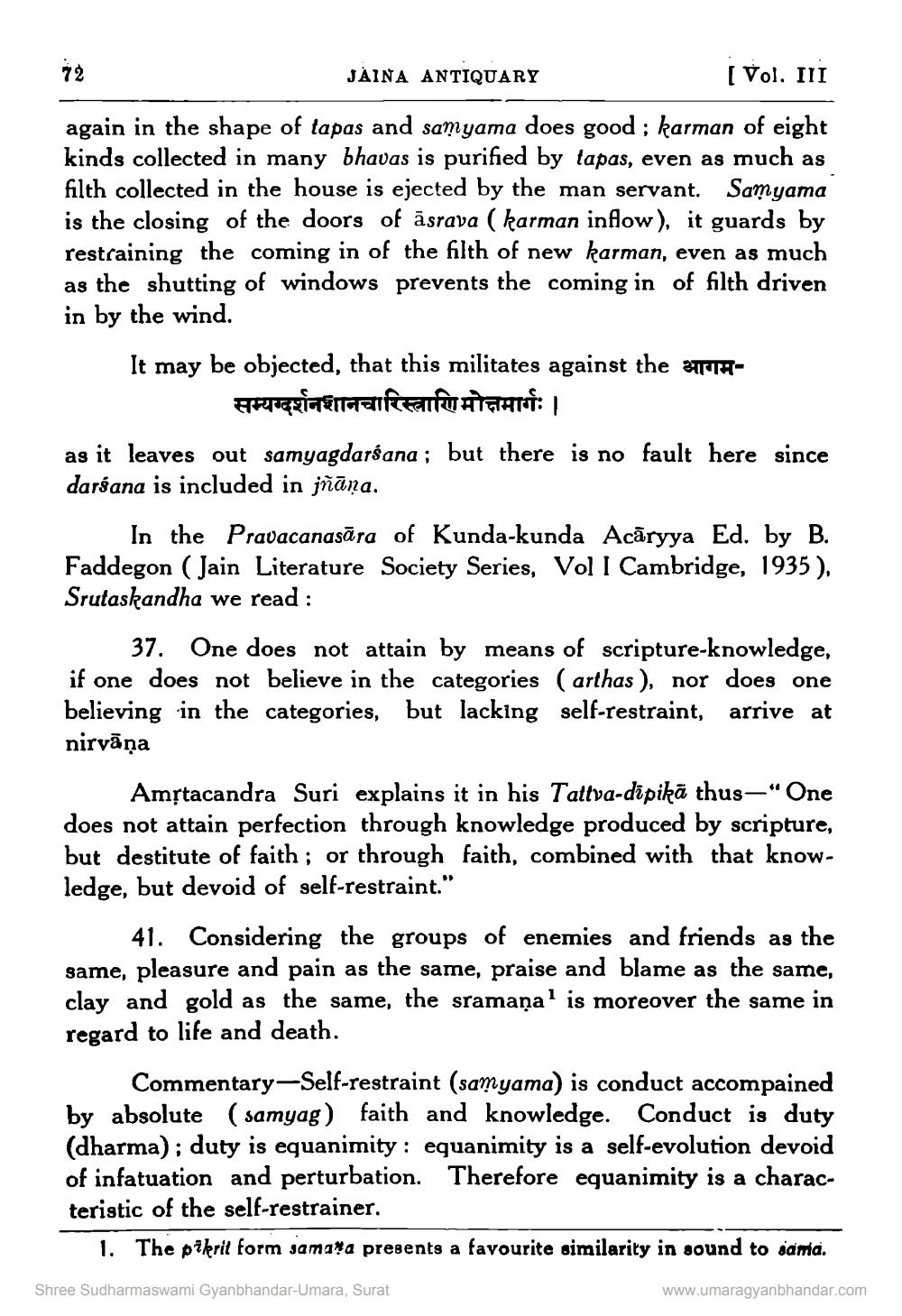________________
JÁINA ANTIQUARY
[ Vol. III
again in the shape of tapas and samyama does good ; karman of eight kinds collected in many bhavas is purified by tapas, even as much as filth collected in the house is ejected by the man servant. Samyama is the closing of the doors of asrava ( karman inflow), it guards by restraining the coming in of the filth of new karman, even as much as the shutting of windows prevents the coming in of filth driven in by the wind. It may be objected, that this militates against the arta
सम्यग्दर्शनशानचारिस्त्राणिमोक्षमार्गः । as it leaves out samyagdarśana ; but there is no fault here since darśana is included in jñāna.
In the Pravacanasāra of Kunda-kunda Acāryya Ed. by B. Faddegon ( Jain Literature Society Series, Vol I Cambridge, 1935), Srutaskandha we read :
37. One does not attain by means of scripture-knowledge, if one does not believe in the categories (arthas ), nor does one believing in the categories, but lacking self-restraint, arrive at niryāņa
Amstacandra Suri explains it in his Tattva-dipikā thus—"One does not attain perfection through knowledge produced by scripture, but destitute of faith ; or through faith, combined with that knowledge, but devoid of self-restraint."
41. Considering the groups of enemies and friends as the same, pleasure and pain as the same, praise and blame as the same, clay and gold as the same, the sramaņal is moreover the same in regard to life and death.
Commentary-Self-restraint (samyama) is conduct accompained by absolute ( samyag) faith and knowledge. Conduct is duty (dharma); duty is equanimity : equanimity is a self-evolution devoid of infatuation and perturbation. Therefore equanimity is a characteristic of the self-restrainer.
1. The pikerit form samana presents a favourite similarity in sound to sama.
Shree Sudharmaswami Gyanbhandar-Umara, Surat
www.umaragyanbhandar.com




